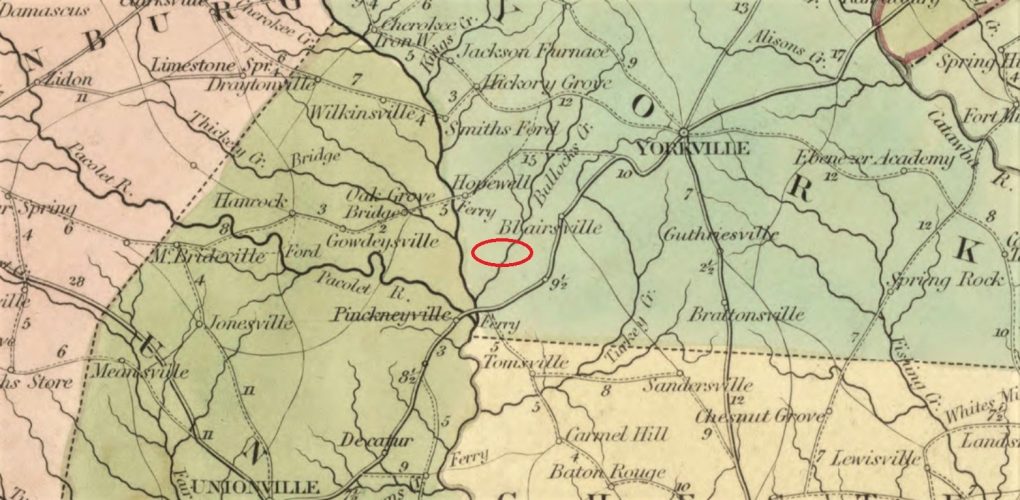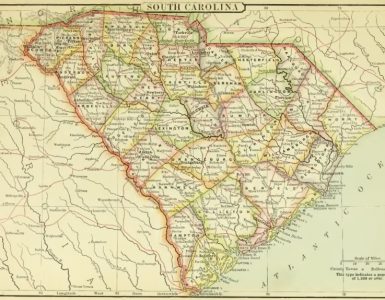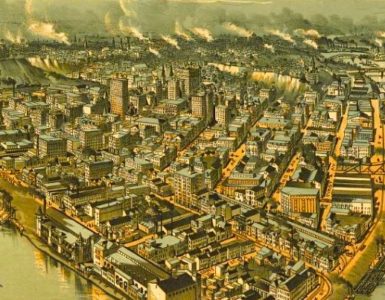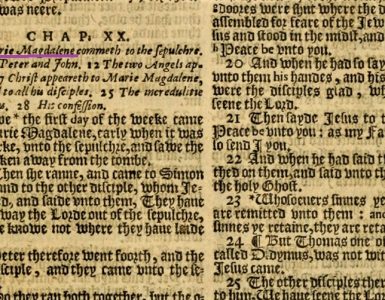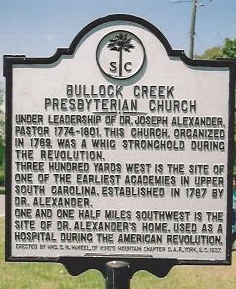 Bullock Creek Presbyterian Church was organized in 1769 in what is currently Sharon, York County, South Carolina. The Word was preached and sacraments administered by local supply ministers until 1774 when the congregation was of sufficient means to call Joseph Alexander. Alexander went to Bullock Creek from the Sugaw (or Sugar) Creek Presbyterian Church in Mecklenburg County, North Carolina. He was born in Cecil County, Maryland, to Theophilus and Catherine (Wallis) Alexander in 1730. For his formal education, Alexander attended Nottingham Academy which was known for its high standards of scholarship maintained by its rigorous master, Samuel Finley. Included among Nottingham’s several graduates of note was physician and founding father Benjamin Rush. Finley went on to be the fifth president of the College of New Jersey (Princeton) where his five-year tenure brought stability to the college and respect for his leadership from a unified student body. When Finley encouraged Alexander to attend Princeton it was during the presidency of Samuel Davies, but when Davies passed away in 1761, Alexander graduated in 1763 with his old mentor, Samuel Finley, the president. An added bonus of his Princeton years was marriage to the daughter of Davies, Martha. Alexander was licensed to preach by New Castle Presbytery in 1767 and that same year he founded a classical school at Sugaw Creek in conjunction with his pulpit labors for the church. He was ordained to the ministry the following year. The call to Bullock Creek required wearing two hats once again as he oversaw the congregation while mastering a classical school. As the eighteenth century drew to a close the issue of church worship music was prominent among Presbyterians as some wanted to continue the use of Francis Rouse’s version of the Psalms while others turned to the eighteenth-century version by Isaac Watts. The struggle between the two groups led to one group leaving Bullock Creek. Despite division of the congregation, Joseph Alexander had a long and fruitful ministry continuing until he retired in 1801 after more than twenty-six years. He had baptized eleven adults and 753 infants. Alexander had the honor of being included among the recipients of honorary degrees given by South Carolina College at its first graduation in 1807. There were as many honorary degrees given as earned ones. Joseph Alexander and Moses Waddel were Presbyterians, while Richard Furman was a Baptist, and the Charleston Episcopal minister William Percy were all given the Doctor of Divinity; John Drayton was given the Doctor of Laws. One title published by Alexander was Eight Sermons on Important Subjects. Joseph Alexander died at Bullock Creek on July 30, 1809. Martha had predeceased her husband, October 13, 1805. The couple had ten children.
Bullock Creek Presbyterian Church was organized in 1769 in what is currently Sharon, York County, South Carolina. The Word was preached and sacraments administered by local supply ministers until 1774 when the congregation was of sufficient means to call Joseph Alexander. Alexander went to Bullock Creek from the Sugaw (or Sugar) Creek Presbyterian Church in Mecklenburg County, North Carolina. He was born in Cecil County, Maryland, to Theophilus and Catherine (Wallis) Alexander in 1730. For his formal education, Alexander attended Nottingham Academy which was known for its high standards of scholarship maintained by its rigorous master, Samuel Finley. Included among Nottingham’s several graduates of note was physician and founding father Benjamin Rush. Finley went on to be the fifth president of the College of New Jersey (Princeton) where his five-year tenure brought stability to the college and respect for his leadership from a unified student body. When Finley encouraged Alexander to attend Princeton it was during the presidency of Samuel Davies, but when Davies passed away in 1761, Alexander graduated in 1763 with his old mentor, Samuel Finley, the president. An added bonus of his Princeton years was marriage to the daughter of Davies, Martha. Alexander was licensed to preach by New Castle Presbytery in 1767 and that same year he founded a classical school at Sugaw Creek in conjunction with his pulpit labors for the church. He was ordained to the ministry the following year. The call to Bullock Creek required wearing two hats once again as he oversaw the congregation while mastering a classical school. As the eighteenth century drew to a close the issue of church worship music was prominent among Presbyterians as some wanted to continue the use of Francis Rouse’s version of the Psalms while others turned to the eighteenth-century version by Isaac Watts. The struggle between the two groups led to one group leaving Bullock Creek. Despite division of the congregation, Joseph Alexander had a long and fruitful ministry continuing until he retired in 1801 after more than twenty-six years. He had baptized eleven adults and 753 infants. Alexander had the honor of being included among the recipients of honorary degrees given by South Carolina College at its first graduation in 1807. There were as many honorary degrees given as earned ones. Joseph Alexander and Moses Waddel were Presbyterians, while Richard Furman was a Baptist, and the Charleston Episcopal minister William Percy were all given the Doctor of Divinity; John Drayton was given the Doctor of Laws. One title published by Alexander was Eight Sermons on Important Subjects. Joseph Alexander died at Bullock Creek on July 30, 1809. Martha had predeceased her husband, October 13, 1805. The couple had ten children.
It took Bullock Creek Church five years to call another pastor following Alexander’s resignation. The man chosen was William C. Davis (1760-1831) who became a controversial figure because of his views published in The Gospel Plan, or A Systematical Treatise on the Leading Doctrines of Salvation. The preface to the book was written June 11, 1809, and it was published in Philadelphia the same year. Davis was already controversial when Bullock Creek called him from his previous church in Olney, Pennsylvania. He said in the preface that the purpose of his book was to present his views to his previous churches in Pennsylvania, and to the people and elders of Bullock Creek. He accomplished his goal because The Gospel Plan created a firestorm of controversy that led to charges being filed against him. Davis believed he would not receive a fair trial before his fellow elders, so he rejected the authority of the presbytery and left Bullock Creek in 1810. He established the first congregation of a group of churches that would come to call itself the Independent Presbyterian Church. Despite Davis’s departure from the P.C.U.S.A. the courts proceeded with adjudication with The Gospel Plan being condemned by the General Assembly in 1810. The Assembly specifically addressed six of his teachings as contrary to the Westminster Confession with two others described as poorly or unguardedly expressed. The committee report adopted by the Assembly prefaced its content saying it included a sample of deviations from the Confession and not a comprehensive catalog. Two examples of statements condemned by the Assembly are: “the active obedience of Christ constitutes no part of that righteousness by which a sinner is justified,” and “obedience to the moral law was not required as the condition of the covenant of works.” His teaching shows the influence of the New England theology of Samuel Hopkins. W. C. Davis had a sizeable following at Bullock Creek and other local churches, so the General Assembly’s judgement did not sit well with them. Members sympathizing with Davis left Bullock Creek Church and erected their own worship building a few hundred yards away. William C. Davis continued in the new church until he resigned in 1829. It must have been an unusual situation along the waters of Bullock Creek with two churches in sight of each other using the word Presbyterian in their names.
Since there were two churches—the original Bullock Creek Church and the Independent Church at Bullock Creek, each had a succession of pastors. At Bullock Creek Church, Aaron Williams pastored 1817-1833, William B. Davies, 1835-1855, and John A. Davies was stated supply, 1856-1861. But at the Independent Church from May 1829 until the church reunited with Bullock Creek Church in 1864, the Independent Church was pastored by Robert Young Russell. After pastoring the Independent Church, Russell continued in the pulpit of the reunited Bullock Creek Church until his death in November 1866. During the Civil War, the congregations of Davis’s Independent Presbyterian Church united with the Presbyterian Church in the Confederate States of America which became after the end of the war in 1865 the Presbyterian Church in the United States. It speaks well for Russell that he could minister for thirty-five years on Bullock Creek and it shows his work as a peacemaker transitioning two congregations resulting from theological division into one. At the time of the church reunion, the communing membership was 235.
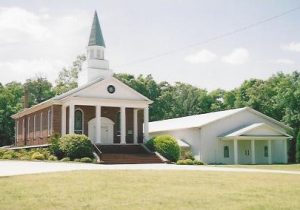 As is sometimes the case with old churches, the earliest records of Bullock Creek have been lost. Bullock Creek has had at least three buildings excluding those occupied by the Independent Church during its existence. The first building was constructed on the west side of Bullock Creek. Another building constructed in the closing years of the 1850s was dedicated in June 1860, which continued to be used by the congregation until at least 1926. The current brick building was dedicated to the glory of God in 1953. Across the highway from the church property is the cemetery where the earliest marked grave is that of Mary Feemster who died in 1776. Former pastors Joseph Alexander and Robert Young Russell are among the more than one thousand interred in the cemetery. Bullock Creek Presbyterian Church is currently a member of the Presbyterian Church in America.
As is sometimes the case with old churches, the earliest records of Bullock Creek have been lost. Bullock Creek has had at least three buildings excluding those occupied by the Independent Church during its existence. The first building was constructed on the west side of Bullock Creek. Another building constructed in the closing years of the 1850s was dedicated in June 1860, which continued to be used by the congregation until at least 1926. The current brick building was dedicated to the glory of God in 1953. Across the highway from the church property is the cemetery where the earliest marked grave is that of Mary Feemster who died in 1776. Former pastors Joseph Alexander and Robert Young Russell are among the more than one thousand interred in the cemetery. Bullock Creek Presbyterian Church is currently a member of the Presbyterian Church in America.
In closing, it is unfortunate that the writing of church history is often dependent on documents created in response to controversy. Controversy is necessary as the purity and peace of God’s church is maintained, but records of division and adjudication do not tell the whole story. Frequently, particularly in the eras addressed on this site, there is emphasis on revivals, tent meetings, and itinerant evangelists. In the antebellum period a minister’s effectiveness was often rated by results from seasons of revival, but consistent readers of this site may have noticed little is said about revivals. It is not that revival in unique situations does not occur, because it does at the whim of the Spirit who works as he wills. The work of any church is defined simply as use of the means of grace for worship—the simple preaching of the Word combined with other aspects of regulated worship constitute God’s instrument for calling the elect to himself and directing them in sanctification. These routine practices require patience and persistence; they do not make the headlines; they deny the idea that individual salvation can be conjured up by providing the right situation for God to act; they are not glitzy; but they do constitute the work of the Church. Church historical documents generally do not say much regarding simple worship, but simple worship through Scripture is essential. Note also, that the Bullock Creek Church did reunite after controversy and division; it took time, but peace was again achieved.
Barry Waugh
Notes–The 1839 map in the header shows the approximate location of the church. The photographs were taken in May 2006. The presbytery in which the Davis controversy occurred in 1810 has not been specified because during that year names and boundaries were changed and the name may have been either Second Presbytery of South Carolina or South Carolina Presbytery (see, Martin, South Carolina Historical Magazine, 1989). Books used include James McLachlan’s Princetonians 1748-1768, Princeton: Princeton University Press, 1976, p. 299, McLachlan cites several primary sources for his information including the Joseph Alexander File in the Princeton University Archives; and Jones and Mills, History of the Presbyterian Church in South Carolina Since 1850, Columbia: Synod of South Carolina, 1926, pp. 516-22. The information on the 1807 graduation ceremony at South Carolina College is from Hollis, University of South Carolina, vol. 1, p. 39. The edition of the P.C.U.S.A. minutes used with reference to W. C. Davis is Minutes of the General Assembly of the Presbyterian Church in the United States of America from its Organization A.D. 1789 to A.D. 1820 Inclusive, Philadelphia: Presbyterian Board of Publication, circa 1820. Harold M. Parker, Jr.’s, “The Independent Presbyterian Church and Reunion in the South, 1813-1863,” was published in Journal of Presbyterian History 50 (1972): 89-110; Parker makes extensive use of judicatory minutes and primary sources and would be a good article to read if you want to pursue additional study of Davis. An article that is mostly concerned with W. C. Davis’s opposition to slavery is “Heresy, Slavery, and Prophecy: The World of William Cummins Davis,” Journal of Presbyterian History 78:4 (Winter 2000), 263-284, by William B. Bynum.


